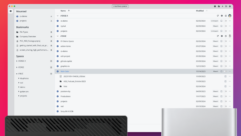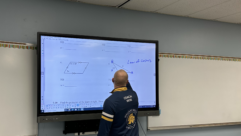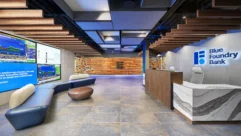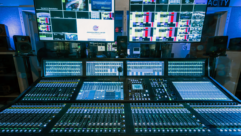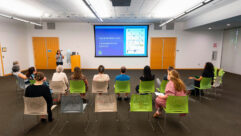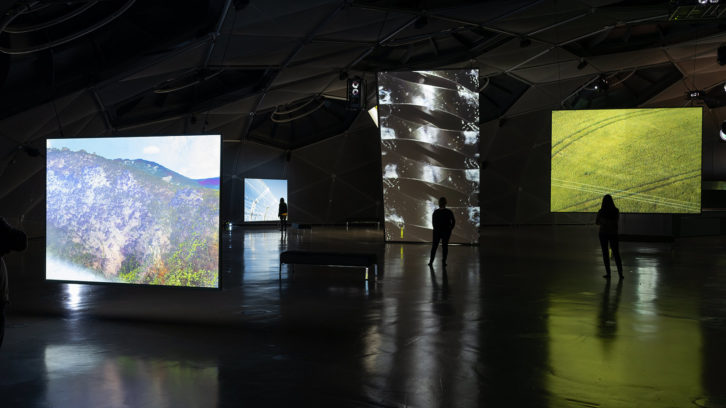
A new exhibition by renowned sound artist Bill Fontana entitled Primal Energies demonstrates the role that immersive, spatial audio can play in video art. Occupying the Kunsthaus Graz museum’s vast ovoid-dome Space 01 Gallery, Primal Energies pays homage to the future of renewable energy through a mesmerizing mi of video imagery and evocative soundscapes.
While viewing images on the eight large screens, visitors are immersed in an evocative blend of energy-related sounds reproduced by 64 Meyer Sound self-powered loudspeakers. The impact of the installation is further enhanced by dynamic spatial sound movements created and automated using Meyer Sound’s Spacemap Go technology
Fontana recorded sounds and images for the work on location with assistance from Scott George of London-based Autograph Sound. During this preparatory period, Fontana and George — both of whom have long association with Meyer Sound — were recruited to serve as beta testers of Spacemap Go. A spatial sound design and mixing tool that leverages the processing power of the GALAXY Network Platform, Spacemap Go provides an interface for multi-channel panning using one or more iPads connected to systems comprising multiple GALAXY processors.
“It’s the ‘digital brain’ behind all that is happening with dynamic spatialization of sound in that realm,” Fontana says. “It lets me do everything I did before using the D-Mitri system, but working directly with GALAXY makes it far more cost-effective, particularly if you are planning something as a permanent installation in a museum or architectural setting.
“We used the iPad app to set up everything on site,” he continues. “We wanted to create a kind of sonic choreography through the space.”
Scott George has collaborated with Fontana on more than a dozen projects over the years, and with Primal Energies he was again charged with overall AV system design, as well as design specifics for the audio system. Fontana’s “sonic canvas” was a matrixed grid of 56 Meyer Sound UPM-1PTM full-range loudspeakers augmented by eight 900- LFCTM low-frequency control elements. For the front end of the audio system, George specified a Mac Mini computer loaded with QLab software for the 24 channel playback and central show control, connecting to the four distributed GALAXY processors over an AVB network. All the spatial trajectories were created on site with Spacemap Go then saved as a file for automated panning in synchronization with the playback program.
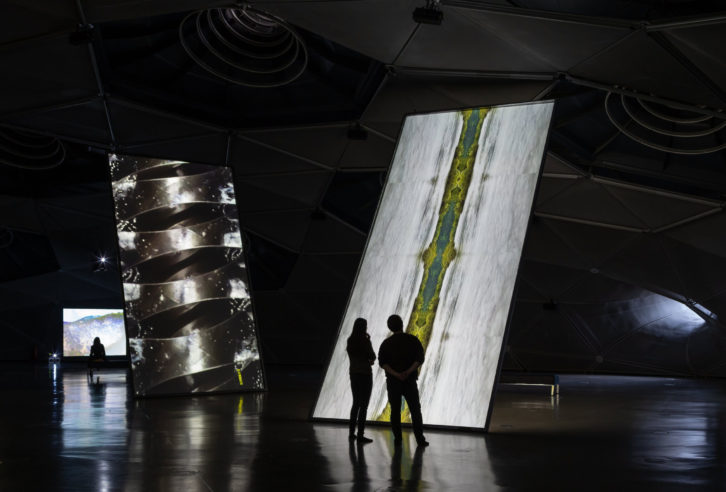 “The iPad interface for Spacemap Go makes it much simpler and more intuitive for the sound artist to grab a sound and move it around wherever desired, rather than using a mouse or a keyboard,” observes George. “This also allows Bill to bring in multiple cues at the same time, so he can try out various trajectories before we save them. And the fact that you can use multiple iPads simultaneously allows sound artists to work collaboratively in the same space.”
“The iPad interface for Spacemap Go makes it much simpler and more intuitive for the sound artist to grab a sound and move it around wherever desired, rather than using a mouse or a keyboard,” observes George. “This also allows Bill to bring in multiple cues at the same time, so he can try out various trajectories before we save them. And the fact that you can use multiple iPads simultaneously allows sound artists to work collaboratively in the same space.”
His affiliation with a major rental company makes George appreciate that Spacemap Go communicates readily with widely adopted playback and show control programs such as QLab, with audio and data carried over the AVB network. “We just took four ports out of the AVB switch and ran them to each of the GALAXYs, carrying multi-channel audio and data. We also set up an intuitive user interface in QLab where the museum operator simply presses a button to start and stop,” he explains.
For George, Spacemap Go together with the inherent advantages of self-powered loudspeakers offers the ultimate in elegant simplicity for large multi-channel sound installations. “When you are running multiple programs from discrete outputs to individual loudspeakers, that necessarily involves a lot of amplifiers — it’s hard to find space in a cramped museum setting. The self-powered approach is far more efficient.”
Artistically Fontana was looking to do what he describes as “deconstructing” the typical video soundtrack. “Here, the sounds are not localized to a specific video,” he says. “They are all related to the common theme, but sounds are shifting around throughout the space, more like a dream space, so you have this incredible enveloping sound experience as you move from screen to screen. It was a privilege to be among the first to use this technology.”
Another key member of the Primal Energies project team was Martin Beck of the Austrian firm Technik für Kunst and Kuturprojekte. Beck supervised the on-site installation and his company also provided all AV equipment, except for the Meyer Sound loudspeakers, which were provided by PRG Hamburg.
Primal Energies was curated by Katrin Bucher Trantow and is presented in cooperation with the University of Art Graz, Ö1 Kunstradio (ORF), Radio Helsinki, mur.at, FunkFeuer Graz and the ‘Kultur inklusiv’ Project, with further support from the AVL Cultural Foundation.


